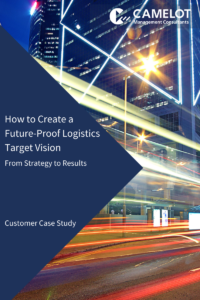As temperature management ensures the stability of pharmaceutical products, it has been a most relevant factor in pharma logistics over the last decades. Integrating it with the search for supply chain visibility, a topic that has gained attention in the last years, seems a logical step. In our blog series, we elaborate on the idea of a super ordinate control tower. This final article explores the WHAT: What needs to be done to integrate temperature management with supply chain visibility?
After discussing the general idea and the benefits of integration between temperature management and supply chain visibility in part 1 and part 2 of this article series, we will now discuss what is needed to realize this integration. There are several dimensions that need to be included in the implementation steps.

End-to-End Supply Chain
Figure 1 highlights the various dimensions of the integration. The supply chain dimension shows that it is necessary to consider the entire supply chain – described as “end to end”. This will include the origin and quality of raw materials and the many partners along the supply chain, like suppliers, CMO’s or LSPs. It spans the infrastructure of organizations in health care as well as the patients’ monitoring of their health conditions.
Translated into activities, this means that internal stakeholder and external business partners have to be included in the integration of temperature management and supply chain visibility. Also, the impact on processes needs to be considered. Starting from the perspective of the internal management of your supply chain processes, it would radically change some of the key jobs of your stakeholders and team members. Replacing the permanent mode of firefighting, frequent exceptions could be handled as a routine. Members of your operational and quality team would be available for analyzing quality, data or simulations, and to trigger preventive or follow-up actions. Obviously therefore they have to be trained and engaged in these new processes.
The provision of relevant data could be extended from the parts of a supply chain, for which there is an immediate responsibility, to further partners involved: hospitals, doctors, and finally the patient. Think of a patient having to take a daily dose of a drug stored in the refrigerator. The refrigerator will be connected to a smart home application – and become part of the end-to-end supply chain. With this, the patient could check if the drug was stored at the right temperature at home, making sure, the drug has the necessary quality. Patients, being actively involved in your supply chain information, will value this as a quality aspect of your product.
Various Data Sources
The data dimension covers the type of the data which is required. Obviously, it will include transactional data from our own systems as well as from many partners. Documents and telematics data will be collected, as well as images, signature scans, and even videos. And finally, publicly available resources such as news and weather data or even market research will add further data. And to complete integration, the direction of data collection needs to be reversed with an integration of information back into execution and planning systems to e.g., open the potential of process automation.
Visibility enables the data provision for temperature management. As concrete actions for the provision and integration, it has to be defined which data shall be collected from which source. This may include internally already available data as well as the integration of external data sources or the additional facilitation of shipments with IoT sensors. Obviously, the different systems and devices need to be integrated with each other in an overall system architecture.
Infinite Options for Applications
The application dimension requires the action of defining the application and use of the data. Especially the following aspects can be highlighted as general requirements covered by an improved temperature management:
- Timing will be improved, from time of availability, to planning in production and distribution, status from execution, location data as well as estimated times of arrival.
- Safety will center around preventing or detecting tempering, theft, or damage. Deviations from route, sensors indicating container doors being opened, or large acceleration indicating physical damage will be comprised.
- Quality includes temperature data itself but also all other conditions from batch traceability and record to storage conditions, like humidity. Product quality impacts will be combined to give evidence – and options for preventive action.
- With the added collaboration from planning to execution, an effective exchange of information will increase reliability, reactiveness, and efficiency of the supply chain. Clear responsibilities do not only provide more transparency, but they are also essential for early and preventive actions.
Having realized the above-mentioned actions of each dimension, the final action will be the integration of visibility.
The Long-Term Perspective
The evaluation and selection of a visibility solution should be done thoroughly as it is a long-term investment. Depending on the individual requirements, a potential solution focuses on temperature management or includes this as a feature in a broader visibility application. The solution may also focus on traceability of products or include further powerful options for analytics or artificial intelligence to support operational and tactical planning decisions. It may integrate visibility data directly in the existing systems or it may be used directly as additional frontend application instead.
At the end of our blog series on the integration of temperature management with supply chain visibility, we can clearly conclude that the topic seems not only reasonable and worthwhile, but also appears to be the consequent next step for an efficient and high-quality temperature management.


